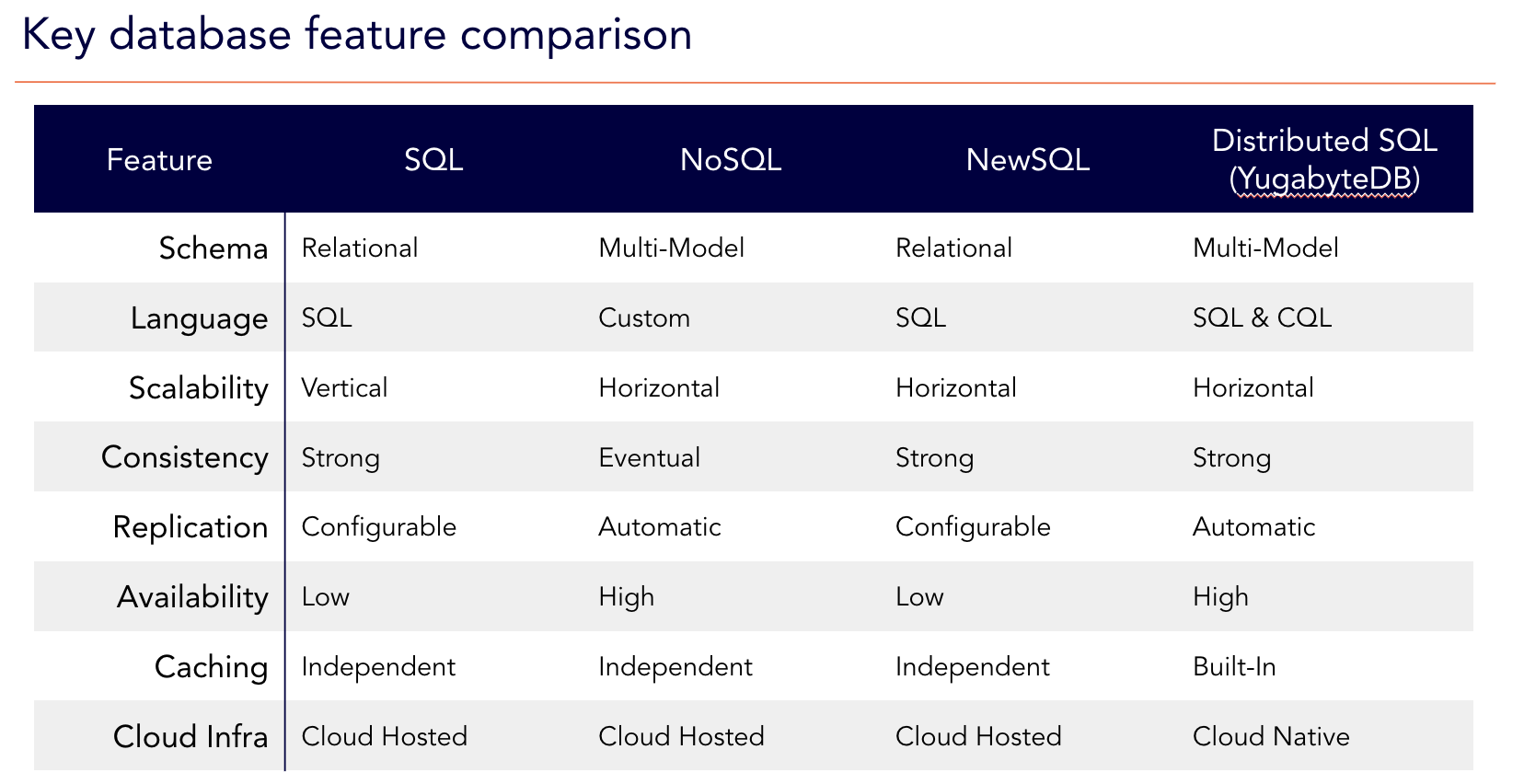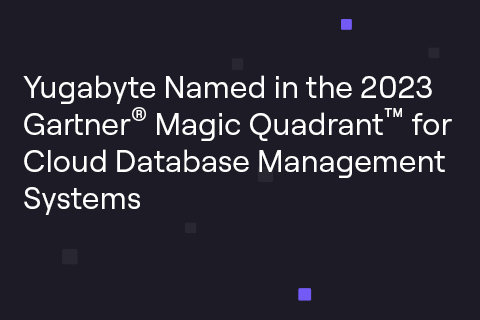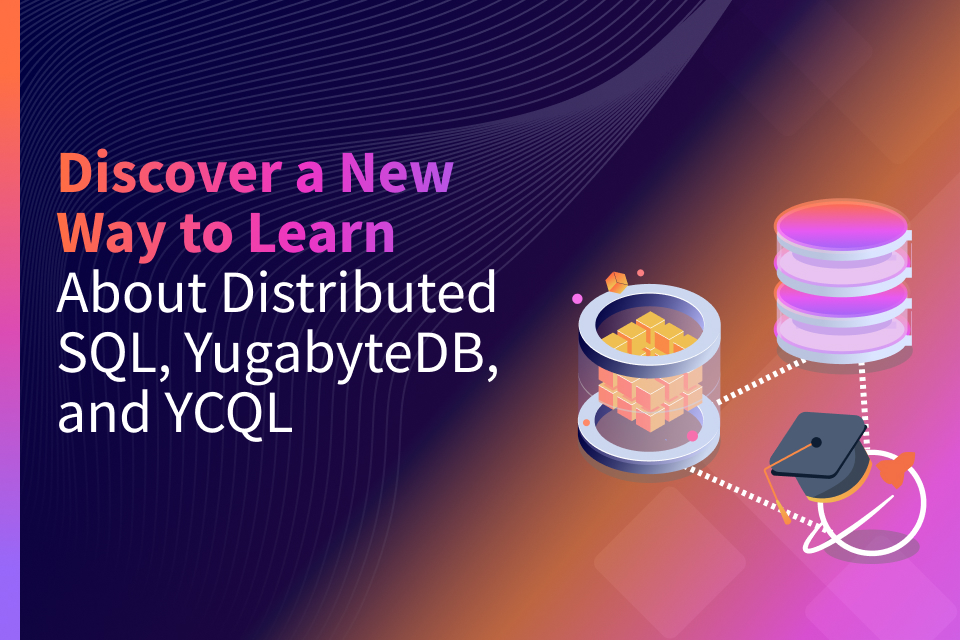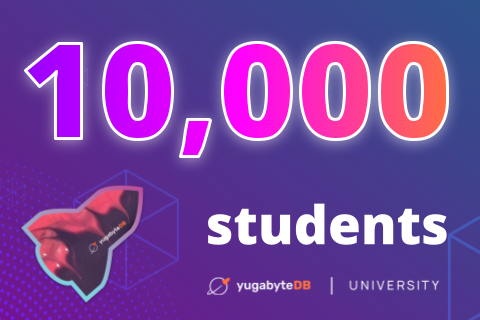Top Database Trends and Predictions to Look Out For in 2023
For a market that Gartner claims is approaching $80bn (an increase of over $14bn since 2020), I’m always amazed that it continues to primarily rely on 20 to 40-year-old database architecture.
How has such a large and significant technology market remained stagnant regarding innovation, flexibility, and value generation?
Luckily for all involved, this is finally changing, and I believe we will soon see a historical shakeup in the transactional database landscape. Organizations will shift their focus from expanding their use of monolithic solutions to adopting modern, distributed SQL databases that align to their overall cloud native architectures.
As we enter the final weeks of the year, I would like to share my top 2023 database predictions.
Time to Stop the Struggle and Realize All the Benefits of Your Digital Transformation Initiatives
Companies will continue to digitally transform in 2023, but their focus will be on a completely different layer of the IT stack. Cloud adoption has exploded in the last couple of years and companies of all sizes have moved their infrastructure to the cloud. Application development teams are using new tools, frameworks, and methodologies to drive new services and solutions.
However, despite all these modernization initiatives, the returns were only partially realized. The major benefits to your engineers and developers were realized in terms of speed, flexibility, and agility, but there is one component that has been overlooked. One which has kept companies from being able to fully meet customers’ needs and drive value.
Welcome to 2023, the year of database modernization.
I predict that in 2023 more organizations will turn their attention to the area of their IT stack where additional change and investment will have a huge impact—the data layer.
It might be a software-driven world, but your database is the bedrock of any and all applications. It gives customers the personalized experiences they want, with the privacy they demand. It’s vital to your ability to offer a fully omnichannel experience and it’s core to you being able to (or not) support seasonal surges and abnormally high peaks in traffic.
Most of the underlying architectures in the data layer were created when Kubernetes was still just the Greek word for “helmsman” and long before we connected the word “public” to “cloud.”
It will take more than cloud and app modernization initiatives to win at digital transformation. Companies across fintech and financial services, retail, and more are realizing the benefits and exploring their options.
Cost and Value Will Join Together to Drive IT Efficiencies
As competition increases and the economic slowdown continues, IT leaders will prioritize projects and initiatives that drive real measurable value.
As we enter 2023, every department must justify their spending and will look to eliminate expensive line items on their budget. But, to achieve success will take more than legacy cost reductions. Companies looking for new ways to become cost-effective will need to shift valuable finite resources to growth initiatives.
I believe they are likely to move on from “status quo” proprietary IT solutions (and their high costs) in search of modern, open-source solutions that can be deployed through the cloud.
Cost, flexibility, and operational efficiency will go hand-in-hand in 2023, with many organizations realizing the benefits of as-a-service offerings. Companies will embrace database-as-a-service, either by standing up their own DBaaS or consuming a third-party service to get the operational simplicity they need to drive the value they want.
They will become comfortable with a database provider managing their data stack, as long as the company maintains control, governance, and observability.
This change is already happening. For example, I recently spoke to a major financial service company that has committed to being Oracle-free by 2033 as a direct result of the high license and operational costs of this monolithic database.
Instead of maintaining costly proprietary (and often dated) technologies, companies are embracing distributed SQL solutions in the cloud (YugabyteDB Managed, for example), which deliver a modern data layer for existing applications (to bridge current digital transformation initiatives) and to support newly-developed cloud native applications and microservices.
Selecting a modern database that offers low-cost adoption, a flexible, open architecture, and PostgreSQL compatibility allows businesses to power applications they need to compete while being agile enough to adapt to future needs.
From DevSecOps to DevDataSecOps: Data Will Become a First-Class Consideration
A large percentage of a company’s budget is dedicated to risk and security management, as well as resiliency and availability.
Major cloud failures happen roughly once every 50 days. The cloud delivers tremendous value, but failures and outages should be expected. Therefore, enterprises must be prepared and ensure that their data will be protected.
Customers expect secure, always-on, always-available services with extremely low latency. In addition, transaction and consumer protections drive an increased need for robust data security and privacy, while government data policies force ongoing compliance with new regulations.
As more organizations begin to understand the value of their data, I expect to see a shift in focus, where security will no longer be an afterthought. Organizations are starting to see the importance of incorporating data (as well as security layers) throughout their development cycles.
Security cannot be left to the end, to be analyzed once a solution is ready to launch. It needs to be baked throughout the development process, and in 2023, companies will be choosing vendors who embed security and privacy in their company, products, and product development processes.
At Yugabyte, we call this DevDataSecOps—combining data, security, development, and operations activities for a powerful, cohesive solution. We believe every customer deserves best-in-class security from their data layer. Yugabyte is committed to delivering world-class security capabilities and is built for sensitive, mission-critical transactional data. Discover more in our dedicated Trust Center.
Will the Real Open Source Please Stand Up? Capitalize on the Value of True Open Source
Open-source software is a popular choice for development and infrastructure. In fact, it’s so popular with users that some companies claim their software is open source even though it really isn’t. The term ‘open source’ isn’t trademarked, so any company can use it to describe their software without too many consequences.
Some companies have a flexible approach to the term ‘open source,’ despite their software not entirely meeting the open source software principles defined by the OSI. Below are some popular license examples:

YugabyteDB began as open-core in 2016. But, it’s been available since July 2019 under the Apache 2.0, permissive free software license. Switching opened up previously closed-source enterprise features such as distributed backups, data encryption, and read replicas ensured that new features were completely free to use.
Genuine open source solutions should save you money, actively deter vendor lock-in, and increase technological agility giving businesses the freedom to try new and innovative software options.
If you decide you want to move to another vendor, open source software allows you to take your data and move it without hassle, the need to recode, or go through a costly migration process.
I predict that databases trying to cash in on the open source term and its loyal advocates without adhering to its principles will see a decrease in adoption.
At Yugabyte, we follow the OSI definition for open source and believe it must be 100% open.
No Time for New APIs: Parlez Vous PostgreSQL?
Pressure is mounting to modernize new and existing applications at a time when resources are stretched thin and IT teams are juggling too many priorities. While we love to expand our skills and learn new technologies (stay tuned for our next prediction!) it’s hard to justify learning a new API or technology if there is no clear benefit or outcome.
Most companies now realize that compatibility with a widely adopted SQL API is crucial to ensure the success of their database modernization efforts. This is especially true for large enterprises or established businesses. Anyone with a set of core existing applications running on legacy databases needs an easy path to a modern data layer that offers familiar APIs and out-of-the-box compatibility.
Looking at the database landscape of 300+ different options, there are many SQL database choices and each one takes a different approach to APIs. Many use proprietary APIs, but increasingly more are recognizing the need for a standard. That standard is PostgreSQL.
PostgreSQL continues to rise in popularity. Over the past year we’ve seen all major cloud providers update or release key PostgreSQL compatibility as part of their database portfolio. Similarly, all leading distributed SQL vendors provide varying levels of PostgreSQL compatibility.
The bottom line is that I believe PostgreSQL will be the de facto standard and a core requirement in 2023 for transactional databases.
At Yugabyte, PostgreSQL compatibility is one of our highest priorities. Because we uniquely reuse the PostgreSQL API layer, we can provide runtime compatibility (not just wire compatibility) and support advanced features, from triggers to stored procedures.
Market Uncertainty Means It’s Time to Enhance Skill Sets
After a boom year for tech in 2021, the scales have tilted in recent months. According to Crunchbase News, more than 67,000 workers in the US tech sector lost their jobs in 2022, following waves of layoffs at tech giants like Twitter, Meta, Netflix, and Coinbase.
Combining a cooler job market with a wave of hot new technologies means 2023 will be the year developers and database specialists wanting to stand out will look to double down on skills development, training, and career-advancing technical certifications.
Luckily there are a ton of valuable free courses and training available online, including our very own Yugabyte University (YBU). YBU has over 10,000 enrolled students and offers a wide variety of free self-paced and instructor-led courses, certification programs, and builder workshops to help people build their distributed SQL and YugabyteDB skillsets.
NoSQL is Irrelevant, NewSQL is Insufficient: Long Live Distributed SQL!
When it hit the market, NoSQL addressed a key issue with traditional RDBMS by delivering horizontal scalability and resiliency—but at the cost of data consistency. This was a sacrifice many companies had to make to try and support the cloud native architectures that could drive value and maintain competitiveness.
When NewSQL came along nearly 11 years ago, it also claimed to fill in gaps by delivering the best of SQL and NoSQL. However, NewSQL failed to deliver fully on that promise.
Distributed SQL approaches the problem differently. It doesn’t look to fill in gaps; it introduces a new architecture built from the ground up specifically to meet companies’ cloud native needs. The adoption of distributed SQL databases is accelerating because companies no longer need to accept tradeoffs with NoSQL, NewSQL, or monolithic SQL databases.

2023 is the year that companies facing new situations and challenges in the cloud will realize they cannot solve their problems, meet their customers’ expectations, or achieve their goals entirely with NoSQL, SQL, or extensions of NewSQL databases. It’s time for them to adopt an architecture that provides the freedom and flexibility required to address their current and future needs.
Looking Ahead to the Database Market in 2023
I can’t predict all the challenges that 2023 will bring. However, based on the market trends I’m seeing and the overwhelming enthusiasm we hear from customers for distributed SQL, I expect a challenging but exciting year ahead!
Distributed SQL is poised to emerge as the de facto database architecture for enterprises looking to deliver market-leading applications and services, and monetize and scale their data, regardless of industry or size.
Even better news is that YugabyteDB is starting to peak at the perfect time to help companies navigate their data journey in turbulent times.
Want to get a head start on your 2023 database modernization efforts? Sign up today and start using YugabyteDB for free today in the cloud.


